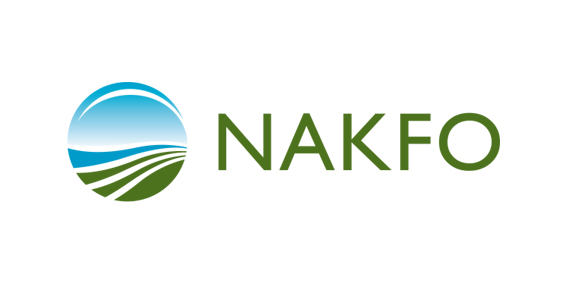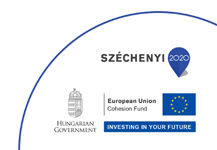Brief on the National Adaptation Geo-information System
Why is it needed?
Hungary is vulnerable in a number ways. The country's climate security, energy security, food and water security are greatly determined by long term global trends. The aspect of adaptation to changes (especially to climate change) has to be integrated into sectoral and territorial policies. Comprehensive information on social, economic, environmental vulnerability is inevitable for these integration processes.
What is NAGiS?
The National Adaptation Geo-information System (NAGiS) project is a multipurpose geo-information system that can facilitate the policy-making, strategy-building and decision-making processes related to the impact assessment of climate change and founding necessary adaptation measures in Hungary. NAGiS may directly support the implementation, supervision and evaluation of the second National Climate Change Strategy, and the implementation and evaluation of the Environment and Energy Operative Programme (KEHOP).
The three main parts of the NAGiS are:
- a map-visualization system (with a resolution of 10×10 km, containing hundreds of layers which show the way different aspects of climate change can affect certain areas of the country)
- a database (GeoDat) containing the calculation results based on modelling (exposure, sensitivity, expected impact, adaptive capacity and vulnerability)
- a meta-database facilitating navigation through different kinds of information (a sort of "data-map" about what to find and where)
Legal bases
The legal foundation for NAGiS was laid down by Act LX of 2007 on the implementation framework of the UN Framework Convention on Climate Change and the Kyoto Protocol thereof. According to Paragraph 3 of the law the implementation of the adaptation strategy framework (a part of the National Climate Change Strategy) has to be supported by a national adaptation geo-information system, and the results of climate vulnerability assessments of the system. According to the law Government Decree No. 94/2014. (III. 21.) on the detailed rules of operation of NAGiS, and in May 2014 the NAGiS Operational rules were adopted.
The NAGiS is operated by the Mining and Geological Survey of Hungary (MBFSz), according to Government Decree No. 94/2014. (III. 21.).
Possibilities of use
The NAGiS is a source of information on the climate trends of Hungary; effects of strategic risk factors like climate change and other issues affecting long-term natural resource management, and the possibilities of adaptation to the changes. It is operated according to the Govt. Decree mentioned above. The information is based on indicators derived from basic data. NAGiS users may find at the portal analysises, impact assessments on the topics mentioned above. Based on the results of research and analyzing activities of the NAGiS, it may provide information for central, territorial and local administration and municipalities for sectoral and territorial planning in the fields of
- climate policy,
- energy policy,
- transport and infrastructure,
- development,
- agriculture, rural development, forestry,
- territorial, municipal, regional planning,
- public service management,
- tourism,
- health and life quality,
- disaster prevention and management.
Priority users / uses of NAGiS may be
- policy preparation, decision-makers,
- economic, infrastructure development, investment, land use actors,
- research,
- informing the public.
The EEA funded Establishing the NAGiS Project
The Project Promoter and the implementation period
In 2013, the Geological and Geophysical Institute of Hungary (a predecessor of the Mining and Geological Survey of Hungary) was awarded a grant of the European Economic Area (EEA) Grant Fund for establishing the NAGiS. The EEA-C11-1 Project is one of the main elements of the EEA Grants funded Adaptation to Climate Change programme area. The fund operator for this programme is the Regional Environmental Center for Central and Eastern Europe (REC), and the donor partner is the Norwegian Directorate for Civil Protection and Emergency Planning (DSB).
The Establishing the NAGiS Project lasted from 24 September 2013 until 30 April 2016. The promoter of the NAGiS project was the Geological and Geophysical Institute of Hungary. The National Adaptation Centre (NAC), a unit of the Institute was responsible for the implementation process.
Data layers of NAGiS were elaborated by MFGI and NAGiS partner projects funded by the Adaptation to Climate Change programme of EEA Grants:
- EEA-C12-11, Long-term socio-economic forecasting for Hungary
- EEA-C12-12, Extension of NAGiS to the agri-sector (AGRAGiS)
- EEA-C12-13, Vulnerability and Impact Studies on Tourism and Critical Infrastructure (CRIGiS)
- EEA-C13-10, New climate change scenarios for the Carpathian-basin region based on changes of radiation balance (RCMGiS)
Find out more about the partner projects here.
Objectives
The overall objective of the NAGiS Project was to develop a multipurpose geo-information system that can facilitate the policy-making, strategy-building and decision-making processes related to the impact assessment of climate change and founding necessary adaptation measures in Hungary.
The three main objectives of the NAGiS Project were:
- To support decision-making on the adaptation to climate change by setting-up and operation of a multifunctional, user-friendly geo-information database based on processed data derived from several other databases.
- Develop the methodology for data collection, processing practices, analytical process and climate modelling related to the impact and vulnerability assessment of climate change and corresponding adaptation methods in line with INSPIRE requirements, accommodating to the Hungarian National Spatial Data Infrastructure.
- Operate¬†a web-based ‚Äúone-stop-shop‚ÄĚ, an information hub for all stakeholders concerned to obtain reliable, objective information, derived and processed data on climate change and other relevant policy areas.
The outcomes of the Project can be found here, on this portal: The NAGiS mapserver, the database and the meta database. The communication activities (events, articles) are presented here too, and the most important studies, publications can be downloaded.
The Donor for the Project
The NAGiS Project is one of the main elements of the EEA Grants funded Adaptation to Climate Change programme area. The total eligible cost of the NAGiS Project was 1,623,074 EUR - 95% of which (max. 1,541,920 EUR) was granted by the EEA Grants Fund and the remaining 5% was provided by MFGI.
The European Economic Area (EEA) Grants are financial mechanisms established by Iceland, Liechtenstein and Norway. The financial mechanisms are available for 15 EU countries, including Hungary, until 2016. Norway contributes around 97% of the total funding. The memorandum of understanding of October 2011 allocated EUR 153 million for Hungary, to help the implementation of 12 programmes. Key areas of support are environmental protection and climate change, research and scholarships, civil society.
The Adaptation to Climate Change Programme aims to promote
- a clear understanding of climate change impacts and vulnerability in Hungary;
- encourage actions to improve climate resilience at local level;
- raise awareness of climate change impacts and
- share examples of replicable projects that contribute to reducing the impacts of climate change.
In 2013, the Financial Mechanism Committee of the European Economic Area (EEA) Grants approved the Adaptation to Climate Change programme area. The fund operator for this programme is the Regional Environmental Center for Central and Eastern Europe (REC), and the donor partner is the Norwegian Directorate for Civil Protection and Emergency Planning (DSB).
Through the Norway Grants and EEA Grants, Iceland, Lichtenstein and Norway contribute to reducing social and economic disparities and to strengthening bilateral relations with the beneficiary countries in Europe. The three states cooperate closely with the EU through the Agreement on the European Economic Area (EEA).
For the period 2009-14, the EEA Grants and Norway Grants amount to EUR 1.79 billion. Norway contributes around 97% of the total funding. Grants are available for NGOs, research and academic institutions, and the public and private sectors in the 12 newest EU member states, Greece, Portugal and Spain. There is broad cooperation with donor state entities. Activities may be implemented until 2016.
Key areas of support are environmental protection and climate change, research and scholarships, civil society, health and children, gender equality, justice and cultural heritage.
 
 
This website has been made with the financial support of Iceland, Liechtenstein and Norway through the EEA Grants and the REC. The Mining and Geoloical Survey of Hungary is responsible for the content of the material.
Further information on the EEA Grants programs see:
rec.org
 
 
 
 
 






